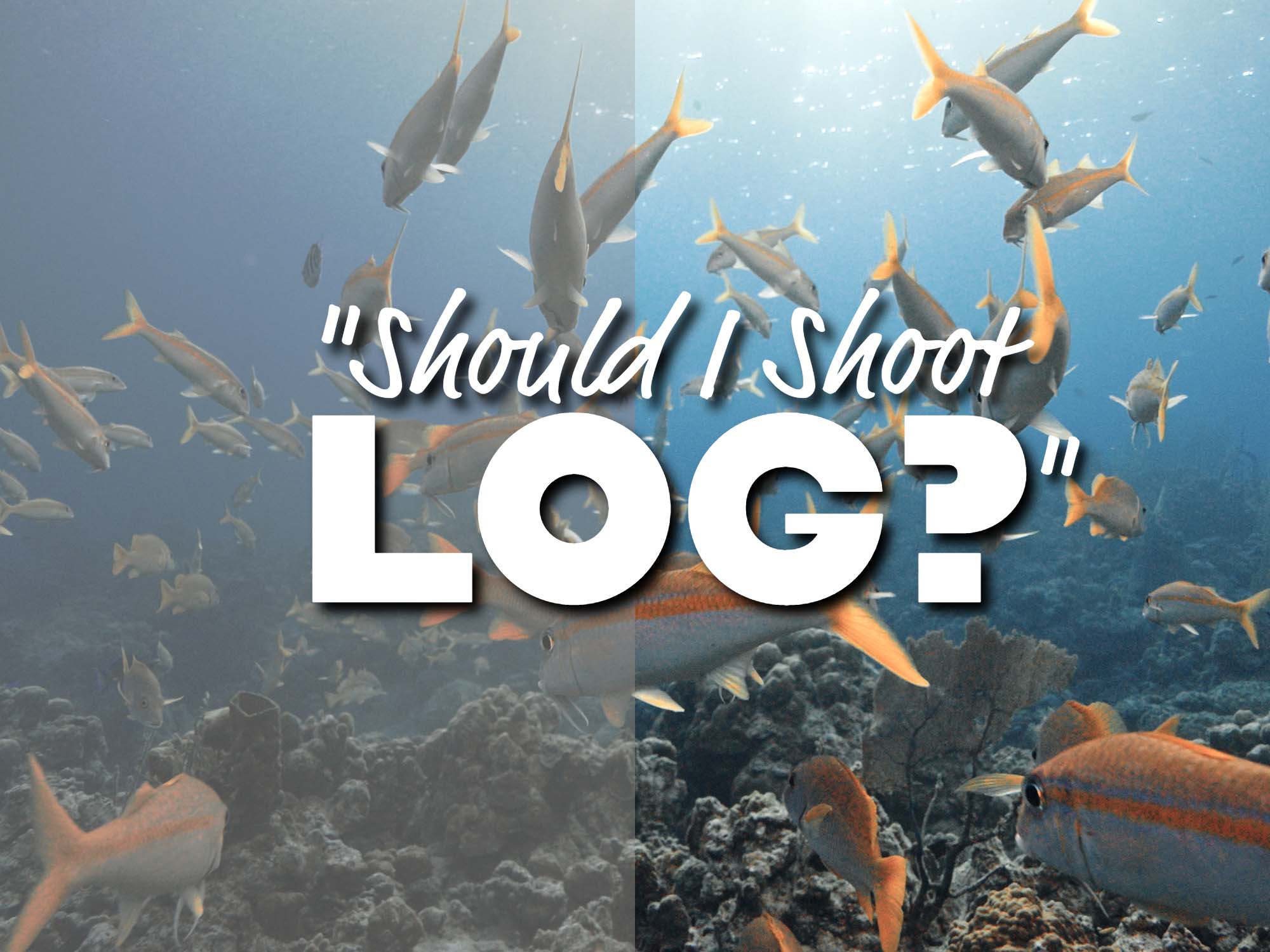Story by David Fleetham
All images © 2024 David Fleetham
There are few challenges in underwater photography that come close to the demands of shooting semi-transparent apparitions at night, a few miles out to sea with the bottom several thousand feet below your flailing fins. I spent two weeks off the island of Yap in Micronesia doing exactly this every night. The boat would depart the dock around 7 PM and I was lucky if my head got to the pillow before 3AM after shooting for two dives.

A tiny paralarval stage of a day octopus, Octopus cyanea, floating in the water column.
BlackwaterFest in Yap
I am not a novice to blackwater diving and had participated in this activity many times around Hawaii, where the idea of open ocean night diving really took hold and began to spread throughout the world. On my previous trip to Yap as a presenter for their MantaFest photo week, I introduced blackwater diving to the Manta Ray Bay Resort. The dive guides had never heard of, or ever dreamed of this experience and although I had frequented the resort for a few decades and was good friends with the owner/operator Bill Acker, several of them, including Bill, questioned my sanity when I first proposed how this would work.
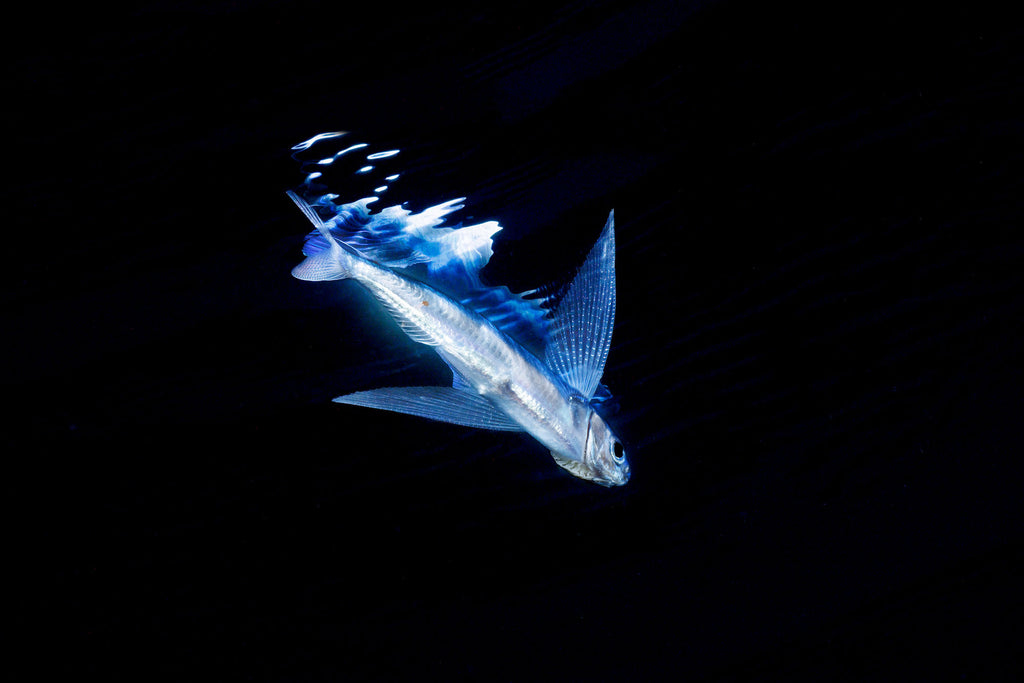
Shortfin flying fish, Exocoetus gibbifrons, just below the surface of the water at night.
This last 2023 Mantafest was followed by two weeks of BlackwaterFest and as a bonus, I was on the boat with Mike Bartick, who literally wrote the book on Blackwater diving (available on Amazon) and was our fearless leader for Yaps first BlackwaterFest. Mike tweaked our set up of a float with a light and a line down to 65 feet that included several sets of lights at various depths to attract creatures and give our boat captain a reference for keeping track of everyone.
Finding Focus
I was shooting with a Canon R5 mirrorless camera in an Ikelite 200DL underwater housing with a pair of DS230 strobes. I alternated between the Canon 100mm Macro and a Sigma 70mm macro. Both lenses were very close in performance with a few very slight differences. The 70mm was a bit better for larger subjects, while the 100mm excelled with the most tiny of the drifting entities.
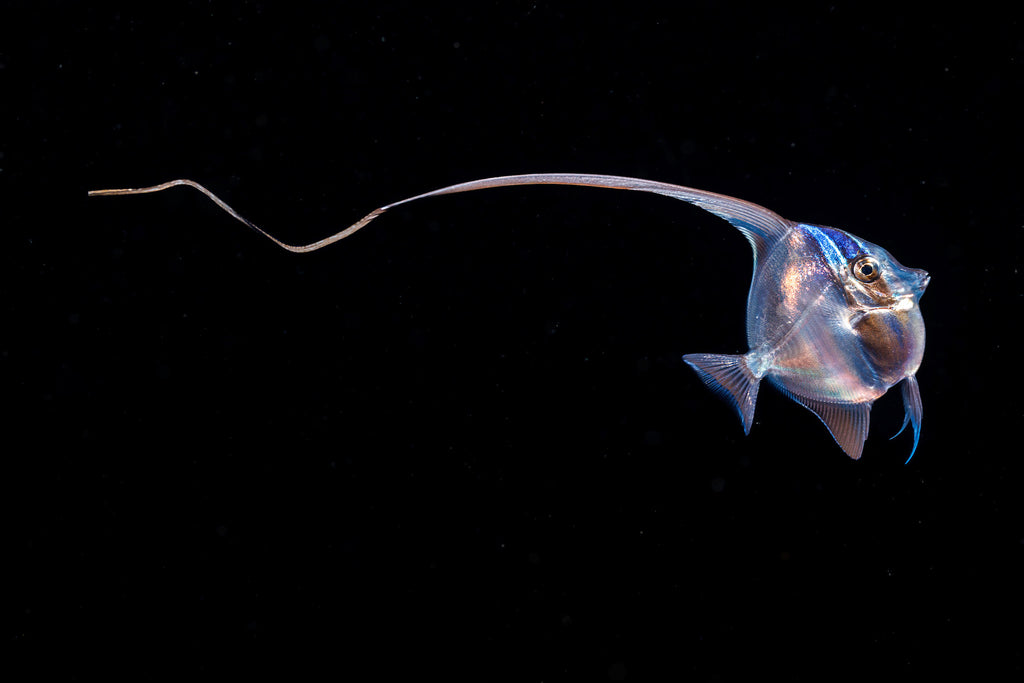
A good quality macro lens is essential to capturing these miniature creatures as they migrate from the deeps to the shallows at night. Larval form of the moorish idol, Zanclus cornutus.
Some of the subjects are extremely challenging to focus on. I have used the R5 extensively on reef subjects and found the autofocus to be the best I have ever shot with. That said, on some blackwater creatures I found the system searching for a lock on the more transparent organisms.
Often when subjects are illuminated with your focusing light, especially larval fish and mollusks, they will tend to begin their migration back to the depths and one finds oneself with a dive profile that resembles the graph of a heartbeat monitor that would leave your PADI instructor with thoughts of revoking your dive certification.
Battery Life on Blackwater
On the third evening I tried to stay fairly shallow in order to gain some bottom time (well not really the actual bottom) and shoot for well over an hour. The down side to all this extra time working the focus motor on my macro lenses was my camera battery would be expended in the middle of the next dive. Luckily for me I had just installed the new USB Charging & Data Transfer Bulkhead in my Ikelite housing. On subsequent nights I brought along a small rechargeable battery bank that are typically used to charge your iPhone. After the first dive I popped off the bulkhead cap to access the USB-C port and charged my camera battery without ever opening the housing... something I adamantly avoid on a small rocking vessel several miles out into open ocean.
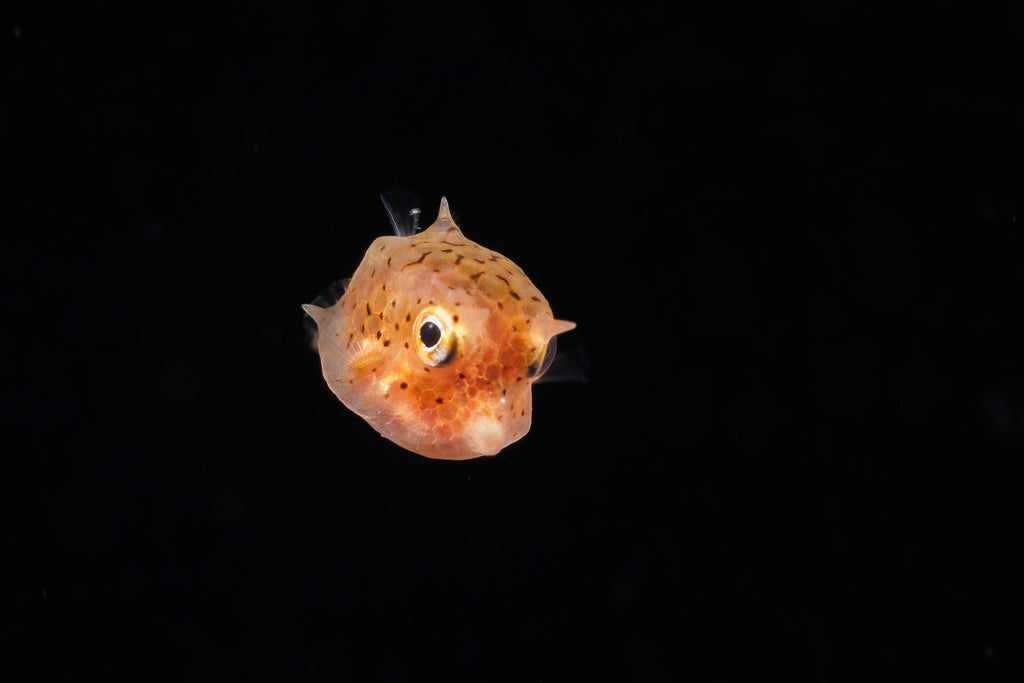
At night juveniles leave the safety of the reef to brave the open ocean under the cover of darkness. Larval stage of a cowfish, Lactoria sp, of the reef fish in family Ostraciidae.
We had a few nights with strong winds and pouring rain. On these occasions I sacrificed my dry towel to cover the housing and external battery. It is worth noting that the USB-C outlet is not water- or air- tight, and while charging I would lose the vacuum I had pulled out of the housing. I was not too concerned as I had previously checked the vacuum and the housing had just been in the water for a successful hour and a half.
Just to be on the safe side I did bring the vacuum pump with me on subsequent outings and pulled a vacuum after the battery had done its job and my camera was good to go for another hour and a half of focusing calisthenics.
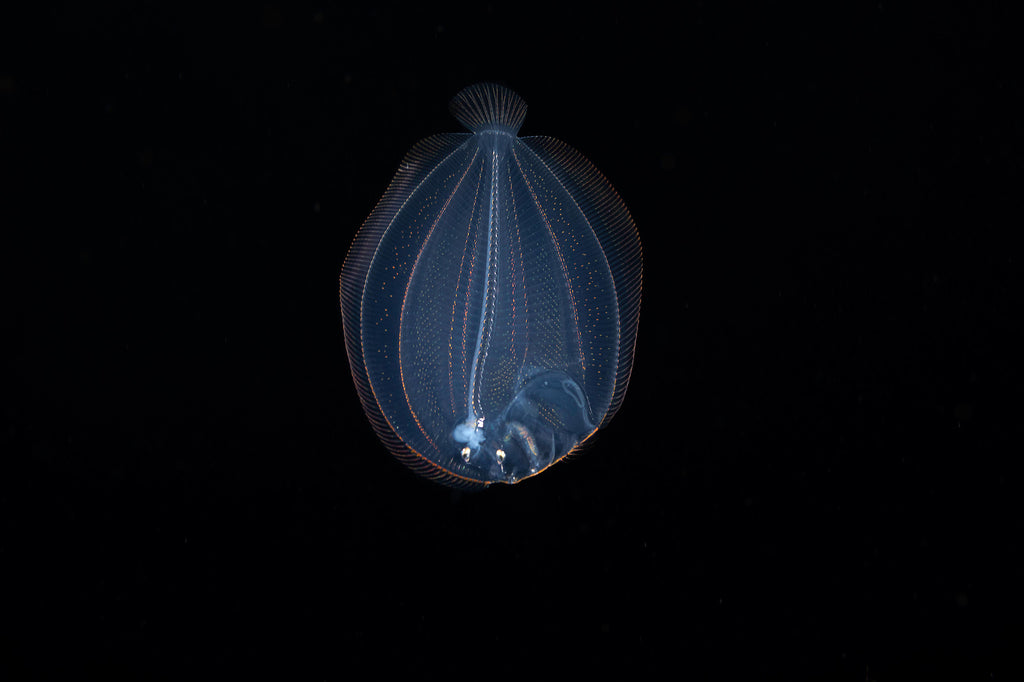
At just two inches in length this appears to be the larval stage of a flounder.
Post-Dive
I have also utilized the USB-C connection to download the images from my camera to my MacBook Pro without removing it from the housing, then charging the battery and been ready to go for the next dive. This is not done on the boat, but when I am back at the resort in more controlled surroundings. This is a moot point if I am going to remove the camera from the housing to change lenses, which was frequently the case for the next day reef diving. I do look forward to using this unique device more on my next live-aboard dive trip.
Additional Reading
An Insider's Guide to Blackwater Photography
A Field Guide to Blackwater Diving by Jeff Milisen [BOOK]
Photo Contest Tips From a 100x Winner
Photographing Giant Mantas in Yap
Shooting Manta Rays at Night Without a Strobe
Night Dive Underwater Camera Settings
Fluorescence Photography to Enhance Your Night Dive [VIDEO]
Shedding Light on Night Diving
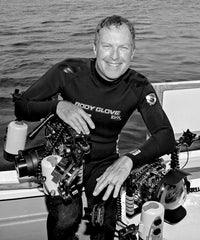 Ambassador David Fleetham left his hometown of Vancouver, Canada, for Maui in 1986 and never looked back. He earned his USCG Captain's license while working in various dive charter businesses, shooting, and submitting his photos to magazines and businesses. One of the most prolific underwater photographers of his time, David now has galleries and agents in over 50 countries that reproduce his images thousands of times each year. Read more...
Ambassador David Fleetham left his hometown of Vancouver, Canada, for Maui in 1986 and never looked back. He earned his USCG Captain's license while working in various dive charter businesses, shooting, and submitting his photos to magazines and businesses. One of the most prolific underwater photographers of his time, David now has galleries and agents in over 50 countries that reproduce his images thousands of times each year. Read more...











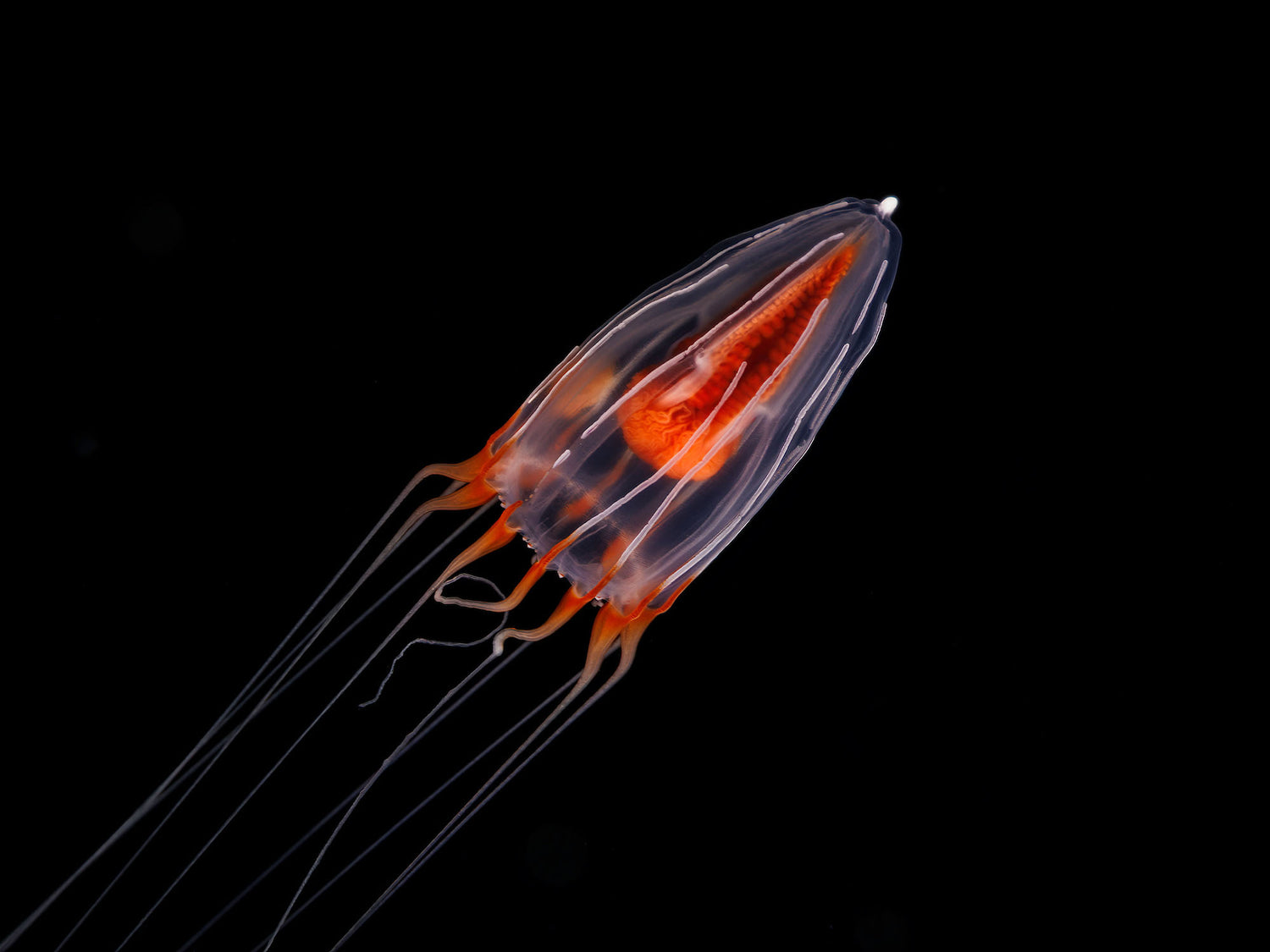
![Underwater Exposure Explained | ISO Settings [VIDEO]](http://www.ikelite.com/cdn/shop/articles/ISO_Settings_Underwater_Exposure_copy.jpg?v=1709251822&width=2000)
